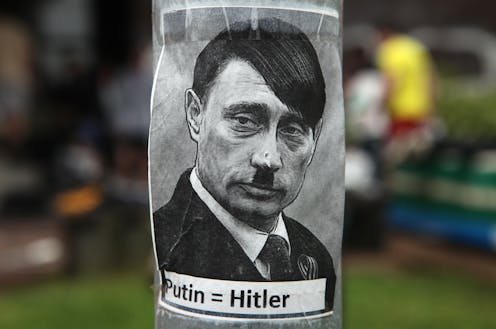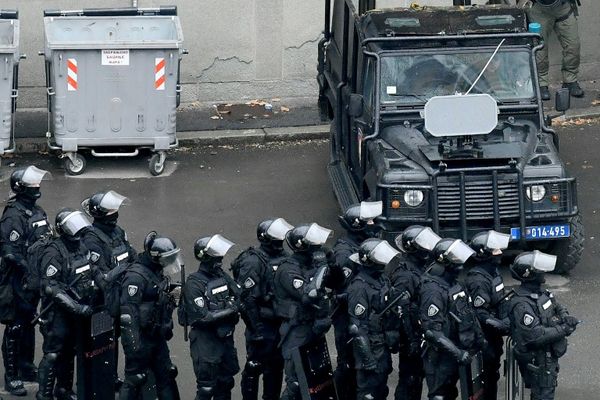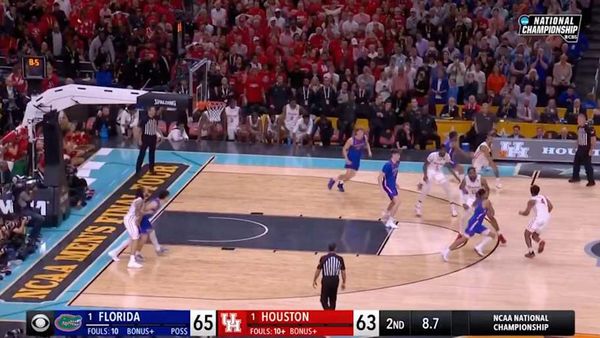
The war in Ukraine has produced a disorienting array of analogies. Vladimir Putin is Hitler. Volodymyr Zelensky is a Nazi. Ukraine could become like Afghanistan or Korea. Russia should accept its borders, just as post-colonial African countries did. The invasion is no different to what the west did in Iraq. The Ukrainians are like the Irish fighting for independence from the UK – but also like Brexiteers resisting the EU.
Meanwhile, other countries bordering Russia, and Taiwan, wonder if they could become “another Ukraine”.
Analogies are a key part of how the war in Ukraine is being justified and understood. The invasion is such a seismic (and for many people, surprising) event, that we have a particularly strong appetite for comparisons. Analogies are ubiquitous in human discourse and have always played an important role in politics and international affairs.
Analogy is embedded in our thinking and language. Cognitive psychologists talk about “analogical reasoning”, in which we use what we know about one situation to infer information about another. We use this to understand our circumstances and plan action – a child avoids cauliflower on the basis of having tried and disliked broccoli. Writing symbolises and words categorise similar phenomena. Hence, Russia has outlawed even calling what it is doing in Ukraine a “war”.
Comparison is also built into scientific enquiry, in that it involves drawing inferences between cases which are thought to be analogous. In the study of peace and conflict, comparison has been a way to generate theories about how to manage conflict, such as addressing basic needs, imposing power-sharing between opponents, or third party intervention. But just how generally applicable much of this broad brush knowledge is in complex and variable conflict arenas will always be open to debate.
Read more: Ukrainian and Russian: how similar are the two languages?
In politics, analogy is used to both create policy and justify it. For instance, the “lessons” of Vietnam strongly influenced later American foreign policy. The fear of “another world war” currently holds sway over NATO’s approach to Ukraine. Arguing by analogy may be one of the most persuasive strategies of communication. Putin’s talk of “denazification” and Zelensky’s invocation of western traumas like the Blitz, 9/11, and Pearl Harbour have undoubtedly helped rally their audiences. Such examples evoke strong imagery and narrative, and supposed real world evidence, in support of positions.
This is common to all conflicts. Partisans promote their preferred comparisons, especially for international consumption. One of the most well known warring analogies comes from one of the most intractable conflicts: Israel-Palestine. Israelis liken the threats they face to Nazism, and fear another Holocaust. Palestinians, however, regard the Israeli occupation and settlement of Palestine as apartheid and ethnic cleansing. Israel-Palestine, in turn, acts as an analogy for other groups in conflict – an archetype of besiegement for some, and of oppression for others.
Peace analogies
Analogies have also been useful in ending conflicts. Comparisons help peacemakers explain and legitimise what they are trying to achieve. In recent decades, South Africa has probably been the most referenced international peace analogy. It is now standard in any peace negotiation process for international comparisons and ideas borrowed from transitions elsewhere to be involved. A recognised likeness helps create relationships of solidarity between people pursuing peace in different countries.
A remarkable example of analogy in peacemaking comes from Northern Ireland. For decades, the Irish nationalist leader John Hume lobbied in Dublin, London, Washington and Brussels for a peaceful solution to the Northern Ireland conflict. In speech after speech, he repeated the example of Franco-German reconciliation in the context of European integration. If they can do it, Hume said, why can’t we in Northern Ireland? This analogy was the rhetorical centrepiece of arguments which ultimately gained wide acceptance in the 1998 Good Friday Agreement.
Does the historical accuracy of an analogy matter? Perhaps not, if an audience is disposed to accept it. But like all political communication, especially in war, analogies should be held up to scrutiny. They can reduce complex events to a simple morality tale. They may result from “confirmation bias” – people finding the lessons they want to in other situations - or outright manipulation. The comparisons mentioned at the outset of this article, for example, range from the insightful and constructive, to the absurd and dangerous.
In any case, for good or ill, analogies are inescapable and will continue to frame what unfolds in Ukraine. “Comparison is so fundamental to our cognition”, writes sociologist Reza Azarian, “that thinking without comparison is almost unthinkable”.
David Mitchell does not work for, consult, own shares in or receive funding from any company or organisation that would benefit from this article, and has disclosed no relevant affiliations beyond their academic appointment.
This article was originally published on The Conversation. Read the original article.







